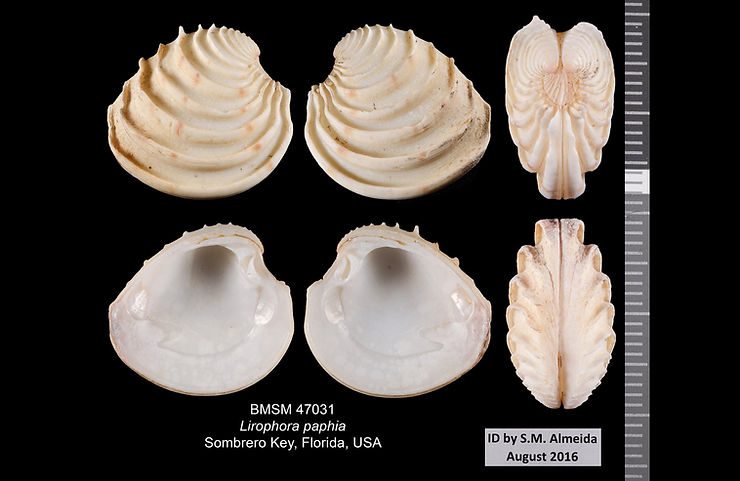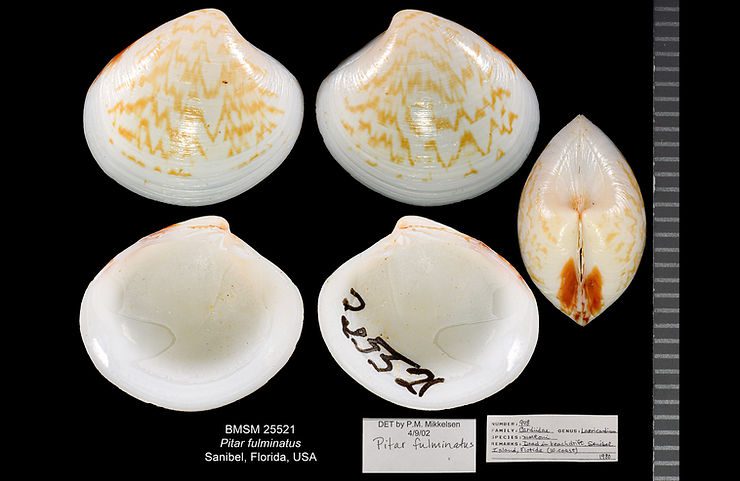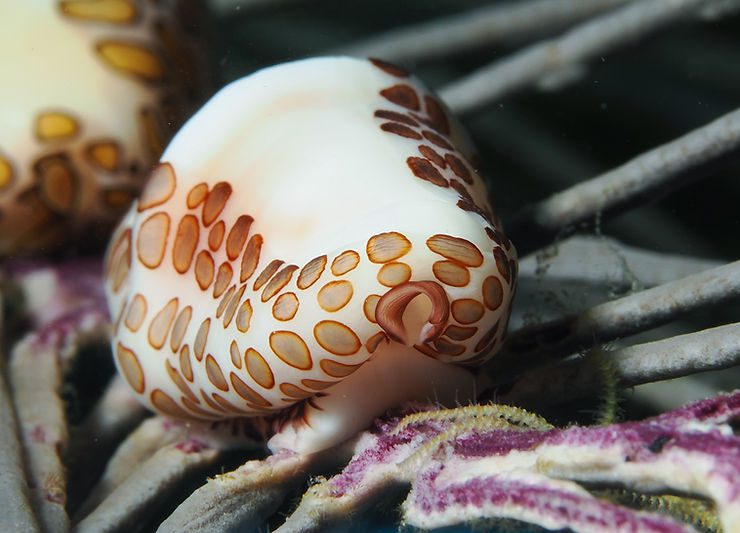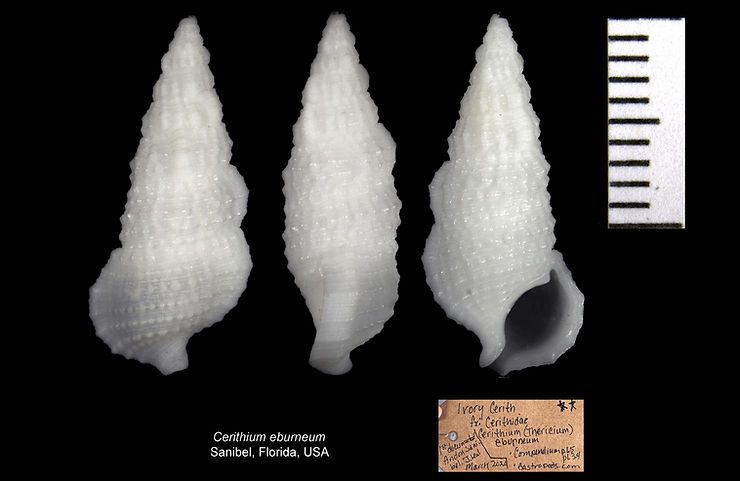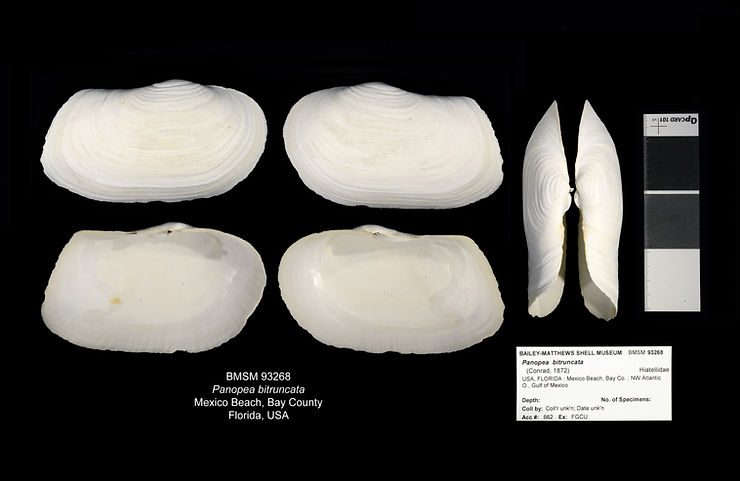
Shell of the Week: The Tinted Cantharus
Gemophos tinctus is a relatively common gastropod around the islands of Southwest Florida, where it may be found living mostly on oyster reefs (photo on top). The shell in this species is thick and heavy for its size, with a reticulated (“criss-crossed”) sculpture and color pattern of diverse shades of brown and reddish brown. Tinted Cantharus are known to feed on the barnacles that thrive on oyster reefs, using their ribbon of teeth, the radula, to reach through the shelly barnacle carapaces. I

